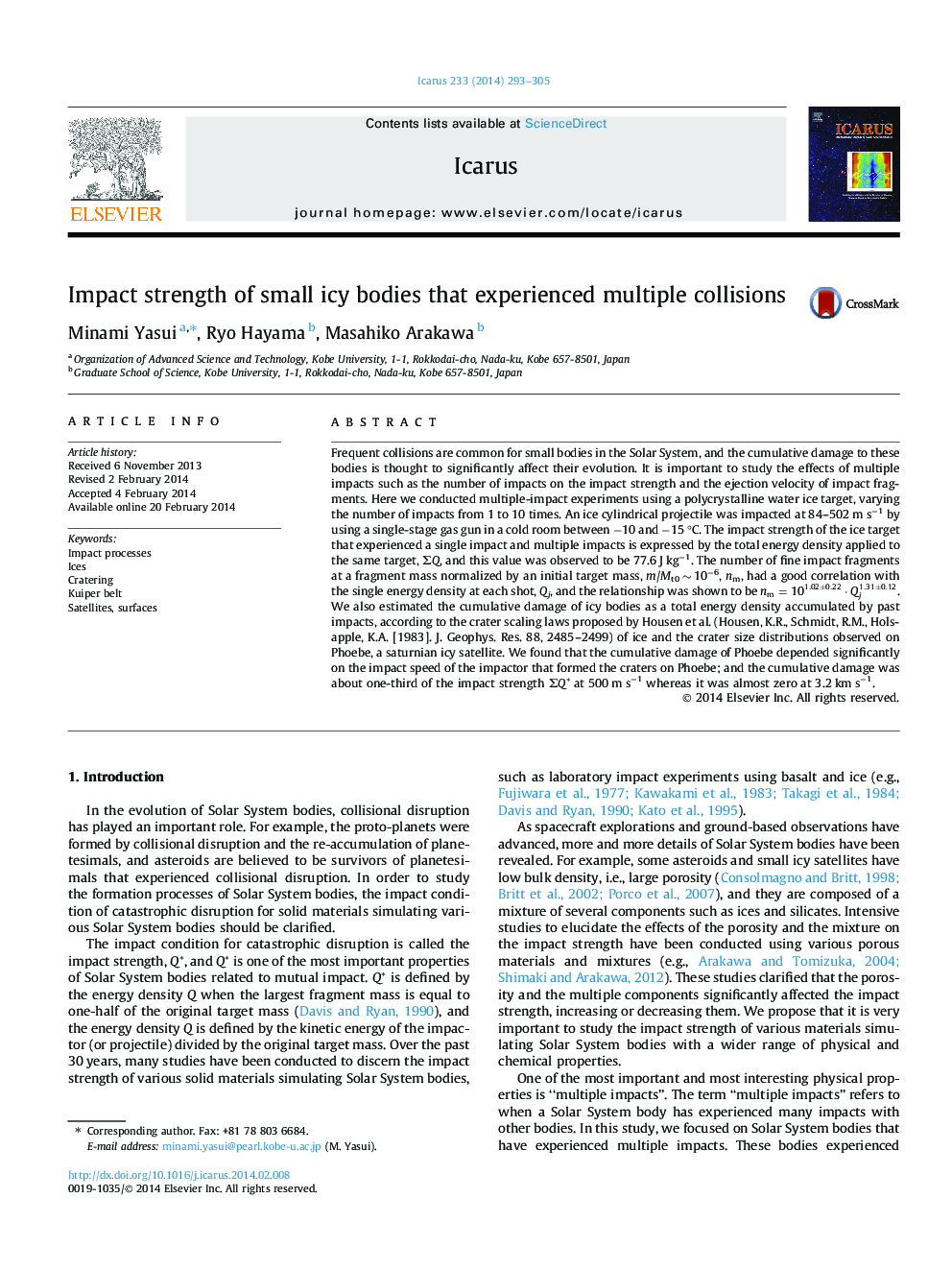| کد مقاله | کد نشریه | سال انتشار | مقاله انگلیسی | نسخه تمام متن |
|---|---|---|---|---|
| 8138392 | 1523557 | 2014 | 13 صفحه PDF | دانلود رایگان |
عنوان انگلیسی مقاله ISI
Impact strength of small icy bodies that experienced multiple collisions
ترجمه فارسی عنوان
استحکام ضربه ای از اجسام یخی کوچکی که برخورد چندگانه را تجربه کرده اند
دانلود مقاله + سفارش ترجمه
دانلود مقاله ISI انگلیسی
رایگان برای ایرانیان
کلمات کلیدی
موضوعات مرتبط
مهندسی و علوم پایه
علوم زمین و سیارات
علوم فضا و نجوم
چکیده انگلیسی
Frequent collisions are common for small bodies in the Solar System, and the cumulative damage to these bodies is thought to significantly affect their evolution. It is important to study the effects of multiple impacts such as the number of impacts on the impact strength and the ejection velocity of impact fragments. Here we conducted multiple-impact experiments using a polycrystalline water ice target, varying the number of impacts from 1 to 10 times. An ice cylindrical projectile was impacted at 84-502 m sâ1 by using a single-stage gas gun in a cold room between â10 and â15 °C. The impact strength of the ice target that experienced a single impact and multiple impacts is expressed by the total energy density applied to the same target, ΣQ, and this value was observed to be 77.6 J kgâ1. The number of fine impact fragments at a fragment mass normalized by an initial target mass, m/Mt0 â¼Â 10â6, nm, had a good correlation with the single energy density at each shot, Qj, and the relationship was shown to be nm=101.02±0.22·Qj1.31±0.12. We also estimated the cumulative damage of icy bodies as a total energy density accumulated by past impacts, according to the crater scaling laws proposed by Housen et al. (Housen, K.R., Schmidt, R.M., Holsapple, K.A. [1983]. J. Geophys. Res. 88, 2485-2499) of ice and the crater size distributions observed on Phoebe, a saturnian icy satellite. We found that the cumulative damage of Phoebe depended significantly on the impact speed of the impactor that formed the craters on Phoebe; and the cumulative damage was about one-third of the impact strength ΣQ* at 500 m sâ1 whereas it was almost zero at 3.2 km sâ1.
ناشر
Database: Elsevier - ScienceDirect (ساینس دایرکت)
Journal: Icarus - Volume 233, 1 May 2014, Pages 293-305
Journal: Icarus - Volume 233, 1 May 2014, Pages 293-305
نویسندگان
Minami Yasui, Ryo Hayama, Masahiko Arakawa,
